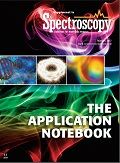Digestion and Analysis of Mixed Vitamin Samples in a Single Batch
Application Notebook
Increasing public and regulatory concerns over the safety of vitamin supplements mean manufacturers are under greater pressure than ever to ensure good manufacturing and testing processes. It is estimated that more than half of the adult population regularly take vitamin supplements, with annual sales of $14.3 billion a year. However, the sector is fraught with media reports of false or fraudulent medicinal claims, and there is already significant scrutiny and questioning from consumers. Public concerns about the safety of dietary supplements were heightened after quality issues (predominantly heavy metal contamination) were revealed in a quarter of 2000 dietary supplements from more than 300 manufacturers.
The FDA has issued requirements and expectations for good manufacturing practice to ensure the quality and safety of dietary supplements. In addition, when the new U.S. Pharmocopeia (USP) chapters 232/233 are implemented in January of 2018, stricter requirements will be put in place to limit the presence of heavy metals in drug products.
Experimental Conditions
A MARS 6 with iWave technology was used to digest 6 different vitamin samples in a single batch. iWave is a revolutionary technology advance that utilizes Light Emitting Technology™ to measure the temperature of the actual sample solution inside the vessel and does not require an internal probe. The MARS 6 One Touch "Pharmaceutical" method was used to precisely control the digestion conditions.
Samples
Pantothenic Acid
Ascorbic Acid
Magnesium Oxide
Manganese Carbonate
Chromium AA Chelate
Selenium Chelate
Sample Size: 0.25 g each
Acids Used: 9 mL HNO3; 1 mL HCl per sample
Method: One Touch - Pharmaceutical
Results
Use of the MARS 6 with iWave allowed efficient processing of six different vitamin samples for elemental analysis. As illustrated in Figure 1, the system automatically adjusts the power to compensate for the different samples so that by the end of the ramp all samples are digesting similarly. The overall time to process these samples including cooldown was 45 min. The resulting digested samples were clear and most solutions were colorless upon dilution with deionized water. However, certain transition elements will provide for a colored aqueous solution. In our case the transition elements chromium and manganese are used in the supplements providing a the slight color to those digestates.

Conclusions
The MARS 6 with iWave technology was able to successfully digest six different vitamin samples in a single batch. This technology will allow for more samples to be run in a single batch which will provide greater flexibility and productivity in the metals laboratory.

CEM Corporation
P.O. Box 200, Matthews, NC 28106s
tel. (704) 821-7015, (800) 726-3331
Website: www.cem.com

Newsletter
Get essential updates on the latest spectroscopy technologies, regulatory standards, and best practices—subscribe today to Spectroscopy.
Specificity and the Net Analyte Signal in Full-Spectrum Analysis
July 21st 2025This tutorial addresses the critical issue of analyte specificity in multivariate spectroscopy using the concept of Net Analyte Signal (NAS). NAS allows chemometricians to isolate the portion of the signal that is unique to the analyte of interest, thereby enhancing model interpretability and robustness in the presence of interfering species. While this tutorial introduces the foundational concepts for beginners, it also includes selected advanced topics to bridge toward expert-level applications and future research. The tutorial covers the mathematical foundation of NAS, its application in regression models like partial least squares (PLS), and emerging methods to optimize specificity and variable selection. Applications in pharmaceuticals, clinical diagnostics, and industrial process control are also discussed.
New Study Expands Nickel Autoionization Spectra to Advance Laser Isotope Separation Technologies
July 17th 2025Researchers at China’s National Key Laboratory have identified 170 nickel autoionization states using resonance ionization mass spectrometry, significantly advancing the spectral database critical for laser isotope separation and atomic spectroscopy.
AI-Powered Fusion Model Improves Detection of Microplastics in the Atmosphere
July 17th 2025Researchers from Nanjing University of Information Science & Technology have introduced a breakthrough AI-enhanced multimodal strategy for real-time detection of polyamide microplastics contaminated with heavy metals.
How Analytical Chemists Are Navigating DOGE-Driven Funding Cuts
July 14th 2025DOGE-related federal funding cuts have sharply reduced salaries, lab budgets, and graduate support in academia. Researchers view the politically driven shifts in priorities as part of recurring systemic issues in U.S. science funding during administrative transitions. The impact on Federal laboratories has varied, with some seeing immediate effects and others experiencing more gradual effects. In general, there is rising uncertainty over future appropriations. Sustainable recovery may require structural reforms, leaner administration, and stronger industry-academia collaboration. New commentary underscores similar challenges, noting scaled-back graduate admissions, spending freezes, and a pervasive sense of overwhelming stress among faculty, students, and staff. This article addresses these issues for the analytical chemistry community.